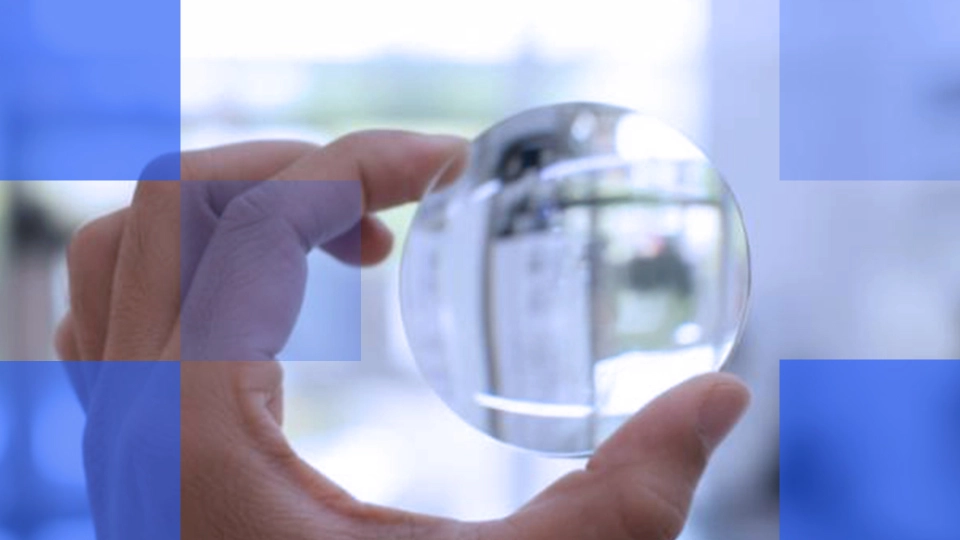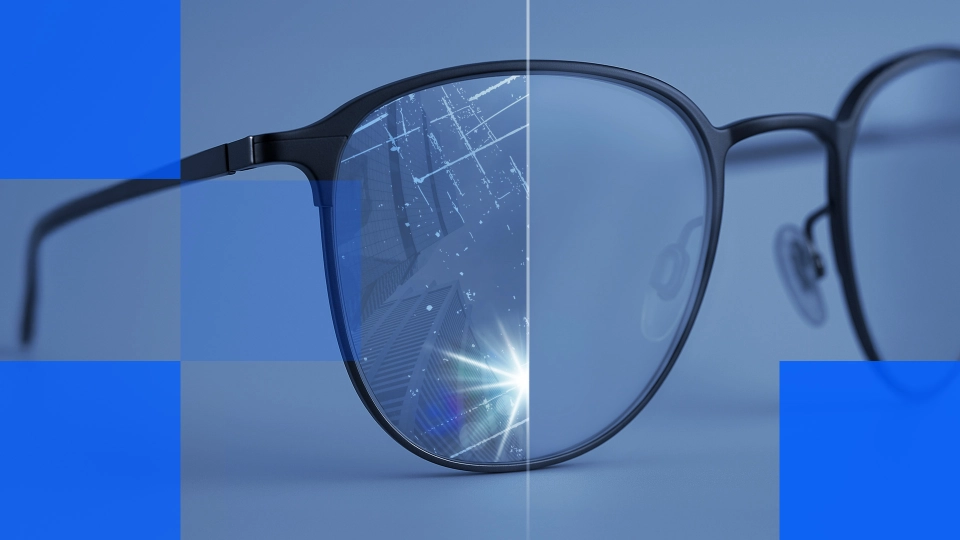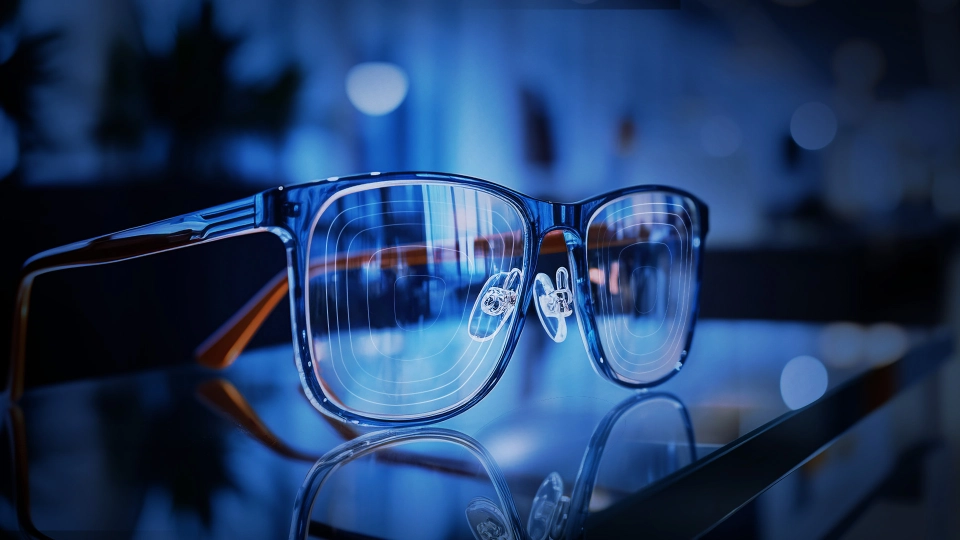
Trivex vs. Polycarbonate Lenses: Choosing the Right Material
- Overview of Trivex lenses
- Key properties of Trivex include:
- Overview of polycarbonate lenses
- Key properties of polycarbonate include:
- Trivex vs. polycarbonate lenses
- Pros of Trivex lenses
- Cons of Trivex lenses
- Pros of polycarbonate lenses
- Cons of polycarbonate lenses
- How to choose between Trivex and polycarbonate
- Trivex and polycarbonate lenses compared
- Provide advanced lens materials for any patient prescription

Trivex vs. Polycarbonate Lenses: Choosing the Right Material
When selecting the best lenses for patients, eye care professionals (ECPs) and optical laboratories must consider numerous factors, such as visual clarity, durability, and patient comfort. Two popular lens materials that come into the conversation are Trivex and polycarbonate lenses. Both offer unique properties and advantages, making the choice between them critical in delivering vision solutions for the patient. Understanding each material's properties, benefits, and limitations will provide ECPs and labs with the knowledge to make informed recommendations and choices.
Overview of Trivex lenses
Trivex lenses were introduced to the market in 2001 as an alternative to polycarbonate lenses. Trivex comes from a urethane-based pre-polymer made through a cast molding process that allows the material to deliver sharper optical clarity. This lens composition results in a "quasi-thermoset" structure with a slightly cross-linked long chain structure. The molecular arrangement contributes to its high-performance properties.
Trivex is known for its high Abbe value (ranging from 43–45), meaning it provides advanced clarity with reduced chromatic aberration, minimizing halos around bright lights.
Key properties of Trivex include:
- High impact resistance: Trivex offers excellent impact resistance, making it suitable for safety glasses and sports eyewear.
- Superior optical clarity: With a higher Abbe value than polycarbonate, Trivex provides clearer vision with less chromatic aberration.
- Lightweight: Trivex is one of the lightest prescription lens materials available, enhancing comfort for wearers.
- UV protection: Trivex offers 100% UV protection built into the material.
- Chemical resistance: The material demonstrates high resistance to solvents and chemicals, contributing to its durability.
- Heat resistance: Trivex maintains its properties even at high temperatures, making it suitable for various manufacturing processes.
Overview of polycarbonate lenses
Polycarbonate lenses are a slightly older technology that entered the market in the 1980s. This material quickly became the industry standard in the Americas for durable, impact-resistant lenses. Polycarbonate is a thermoplastic material composed of carbonate groups. Its molecular structure allows for high-impact resistance and flexibility, making it a good choice for shatter-resistant lenses. With an Abbe value of around 30, polycarbonate lenses tend to have more distortion and chromatic aberration compared to Trivex.
Key properties of polycarbonate include:
- Impact resistance: Polycarbonate can withstand high impact, making it the go-to material for safety and sports eyewear.
- Lightweight: While not as light as Trivex, polycarbonate lenses are significantly lighter than traditional glass or CR-39 plastic lenses.
- UV protection: Polycarbonate lenses offer 100% UV protection.
- High refractive index: With a refractive index of 1.586, polycarbonate allows for thinner lenses, especially in higher prescriptions.
- Cost-effective: Generally, polycarbonate lenses are a cost-effective option.
- Ease of manufacturing: Polycarbonate is easy to shape and process, making it a popular choice among lens manufacturers.
Trivex vs. polycarbonate lenses
While both Trivex and polycarbonate lenses have similar uses, their chemical composition and manufacturing processes lead to differences in performance. Understanding the materials’ strengths and limitations help you choose the right material based on a patient’s specific needs.
Pros of Trivex lenses

1. Optical clarity
With a higher Abbe value, Trivex lenses provide clearer vision, reducing issues like halos and blurriness that are more common with polycarbonate. This is particularly beneficial for higher prescriptions.
2. Lightweight comfort
Trivex lenses are lighter than polycarbonate, providing longer comfort for extended wear, especially in higher prescription ranges, where lens weight becomes more noticeable.
3. Impact resistance
Even though it is not as durable as polycarbonate, Trivex offers high-level impact resistance, making it a strong contender for patients, like hobbyist woodworkers, who might want their eyewear to double as safety glasses.
4. UV protection
The 100% UV protection in Trivex lenses is integrated directly into the material, ensuring long-lasting protection that doesn’t degrade over time.
5. Scratch resistance
Trivex lenses are more resistant to scratches than polycarbonate, making them more durable for patients with an active lifestyle or children who rough handle their glasses.
Cons of Trivex lenses
1. Cost
Trivex lenses are typically more expensive than polycarbonate, making them less accessible for budget-conscious patients.
2. Thickness
For prescriptions over +/- 3.00, Trivex lenses can be thicker than polycarbonate, which may be a drawback for patients prioritizing aesthetics and thinness.
3. Tinting challenges
Trivex lenses can be challenging to tint and often require specific tintable hard coatings for optimal results. While advancements in coating technologies have improved lens tinting, these challenges remain similar to those faced by polycarbonate.
Pros of polycarbonate lenses
1. High impact resistance
Polycarbonate is one of the most impact-resistant materials available, making it ideal for sports goggles, safety eyewear, and children’s glasses. If durability is the patient’s most important factor for eyewear, then polycarbonate provides more protection than Trivex.
2. Affordability
Polycarbonate lenses are generally more affordable than Trivex, making them a cost-friendly option for patients on a budget.
3. Lightweight
While not as light as Trivex, polycarbonate lenses are still lighter than many other lens materials, providing comfort without weight.
4. UV protection
Polycarbonate lenses are rated highly for built-in UV protection, shielding eyes from harmful rays, though it allows a slight UV penetration (3%) compared to Trivex, which blocks 100% US rays.
5. Thickness
Due to its higher refractive index, polycarbonate allows for thinner lenses than Trivex, especially in higher prescriptions.
Cons of polycarbonate lenses
1. Lower optical clarity
With a lower Abbe value than Trivex, polycarbonate lenses can lead to more noticeable chromatic aberration, especially in stronger prescriptions or larger lens sizes.
2. Scratch resistance
Polycarbonate is not as inherently scratch-resistant as Trivex. Though modern scratch-resistant coatings significantly improve its durability, polycarbonate materials can have a shorter lifespan without additional scratch-resistant coatings.
3. Chemical resistance
Polycarbonate lenses are more susceptible to chemical damage, which can lead to stress cracking over time.
4. Tinting challenges
Tinting polycarbonate lenses presents a significant challenge, as they require specialized coatings to ensure consistent results. The material’s softness further complicates the process, making polycarbonate less ideal for certain lens designs, such as dual-surfaced lenses, where the risk of breakage during production increases.
5. Limited availability
Polycarbonate’s softness restricts its use in dual-surfaced lens designs. The heightened risk of breakage during manufacturing makes it less suitable for such applications, limiting its availability in some specialized designs.
How to choose between Trivex and polycarbonate
When deciding between Trivex and polycarbonate lenses, the choice ultimately comes down to finding the cross-section between patient needs, lifestyle, and budget. When recommending lens materials to patients or selecting them for lab production, consider the following factors:
- Prescription strength: For lower prescriptions (+/-3.00 and under), Trivex and polycarbonate are comparable in thickness. For higher prescriptions, polycarbonate may offer thinner lenses.
- Frame selection: For rimless or drill-mount frames, Trivex's better drill resistance makes it an excellent choice.
- Patient lifestyle: For patients with active lifestyles or those requiring safety eyewear, both materials offer above-average impact resistance. However, polycarbonate's slightly better impact resistance might give it an edge for extreme sports or industrial safety options.
- Optical quality: For patients who are sensitive to optical distortions or those with complex prescriptions, Trivex's superior optical clarity may be preferable.
- Weight sensitivity: For patients who are particularly sensitive to the weight of their glasses, Trivex's lighter weight could provide greater comfort.
- Budget: If cost is a primary concern, polycarbonate typically offers a more affordable option without significantly compromising on quality.
Trivex and polycarbonate lenses compared
|
Feature |
Trivex |
Polycarbonate |
|
Optical Clarity |
Higher Abbe value, sharper optics |
Lower Abbe value, more distortion |
|
Impact Resistance |
High impact resistance |
Slightly better impact resistance |
|
Weight |
Lighter than polycarbonate |
Lightweight, but denser than Trivex |
|
Thickness |
Slightly thicker for stronger prescriptions |
Thinner than Trivex |
|
UV Protection |
100% UV blocking/up to 400 nanometers of protection |
97% UV blocking/up to 385 nanometers of protection |
|
Scratch Resistance |
More scratch-resistant |
Less scratch-resistant |
|
Cost |
Higher cost |
More affordable |
Both Trivex and polycarbonate lenses offer significant advantages over traditional lens materials like CR-39 and glass. Trivex excels in optical clarity, chemical resistance, and overall lightness, making it a great choice for patients who prioritize visual quality and comfort, especially in lower to moderate prescriptions. Polycarbonate, on the other hand, is a great material choice when a patient wants impact resistance, a thinner profile in higher prescriptions, and a more affordable price point.
Provide advanced lens materials for any patient prescription
As an eye care professional or lab technician, understanding the nuances of these materials allows you to make informed recommendations to patients and expand your lab’s portfolio to cater to a wide variety of needs.
IOT Lenses creates designs compatible with both polycarbonate and Trivex. Trivex’s ultra-lightweight nature and high impact resistance make it perfect for rimless and semi-rimless frames, as well as high-impact designs such as our Endless Sport Progressive lenses.
Our lens designs in polycarbonate provide a cost-effective solution across multiple lens designs, from progressives to driving lenses. They offer unmatched impact resistance and inherent UV protection. Both materials are compatible with a variety of treatments—including anti-reflective coatings, blue light filtering, and photochromic options—allowing for extensive customization.
Please contact us to learn more about Trivex and polycarbonate materials, especially in combination with other lens technologies, and how our lens designs and technologies can benefit you.





